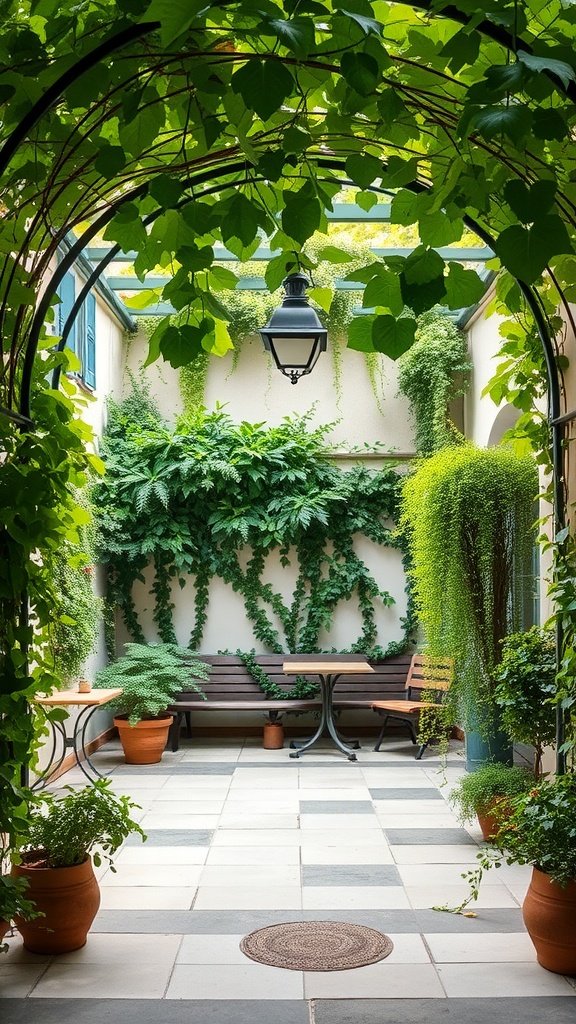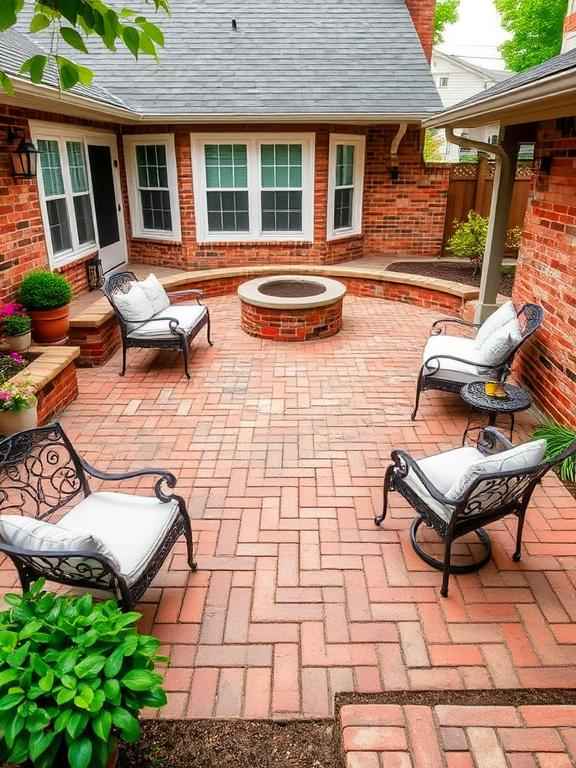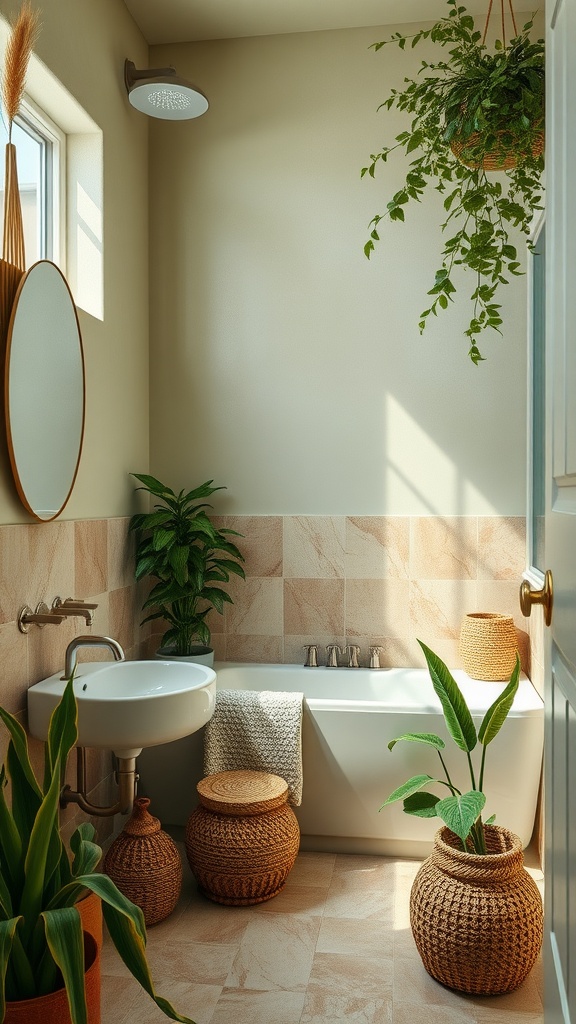23 Raised Garden Bed Layout Ideas to Transform Your Outdoor Space
When it comes to enhancing your backyard with raised garden beds, the possibilities are endless. Whether you’re an experienced gardener or just starting, choosing the right layout can elevate your outdoor space, maximize your gardening potential, and even create a stunning focal point. Raised garden beds offer a variety of benefits, from better soil drainage and pest control to easier access for planting and harvesting.
In this guide, we’ll walk you through 23 creative raised garden bed layout ideas, perfect for transforming any backyard into a beautiful, functional space. Each idea is designed to inspire you and help you choose the perfect configuration for your outdoor needs.
1. Traditional Rectangular Layout for Maximum Space Utilization
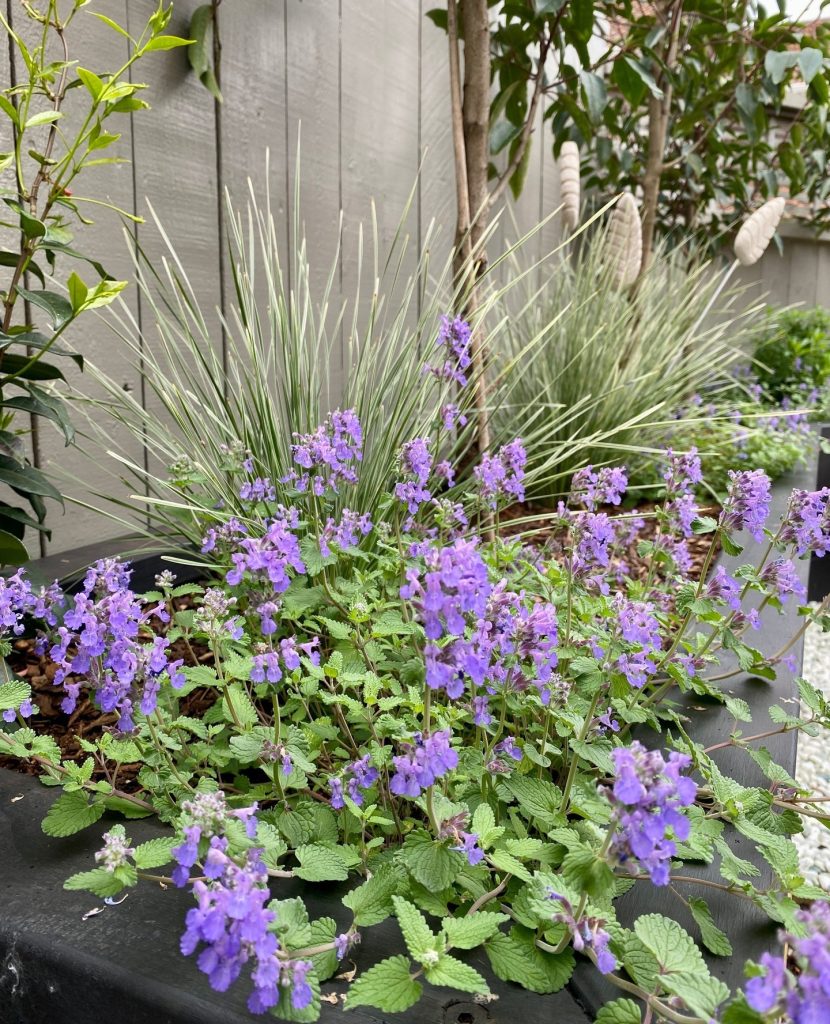
A classic rectangular layout for raised garden beds is an excellent choice for those with spacious backyards. It’s practical and efficient, making it easy to grow a wide range of plants in clearly defined rows. Whether you’re growing vegetables, herbs, or flowers, this setup allows for maximum space utilization and simplifies crop rotation.
The rectangular design works particularly well in larger gardens, providing ample room for a variety of plants while keeping everything neatly organized. This setup also ensures that you have easy access to each bed, so you can tend to your plants without stepping on the soil. The straight lines of the beds create a harmonious and visually pleasing design, perfect for gardeners who prefer a clean and structured look.
Additionally, rectangular beds allow for better sunlight exposure, as they can be placed in such a way that each plant gets the optimal amount of sunlight during the day. This layout is also versatile, as you can arrange multiple beds in a row or stagger them to fit the available space.
2. LShaped Raised Beds for Corner Spaces
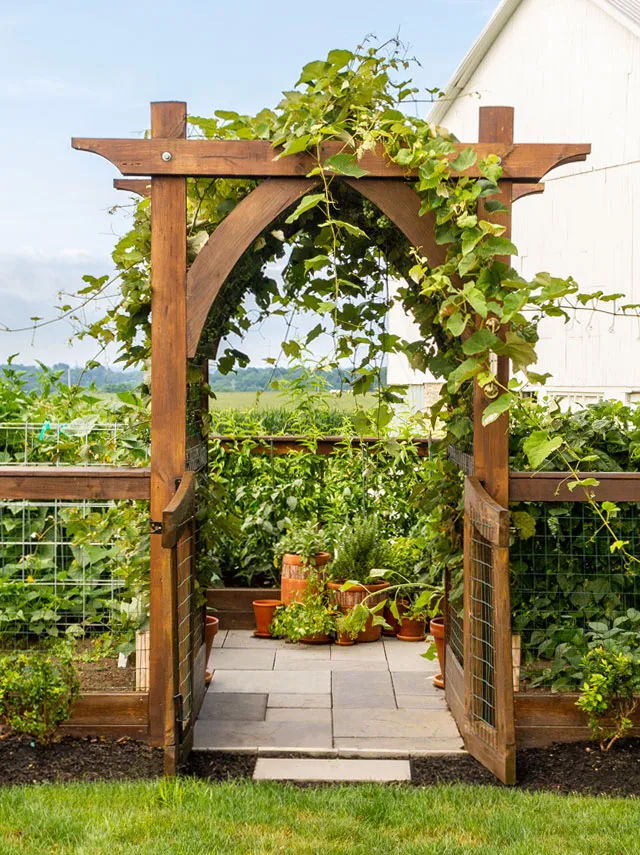
For gardeners with corner spaces or those looking to maximize their yard’s potential, the Lshaped layout is an ideal solution. This design utilizes two perpendicular beds arranged to form an “L,” which fits snugly into the corner of your garden, making the most of unused or awkwardly shaped areas.
The Lshaped configuration offers both aesthetic appeal and functional benefits. It creates a natural division between different sections of your garden, allowing you to separate flowers, vegetables, and herbs or create designated areas for different gardening needs. The layout also provides ample space for growing various plants while maintaining easy access to each bed.
This design is great for small or mediumsized gardens where maximizing space is key. The Lshape also offers more flexibility for planting, giving you the freedom to experiment with different crops and create beautiful, symmetrical garden designs.
3. Circular Garden Bed for a Unique Look
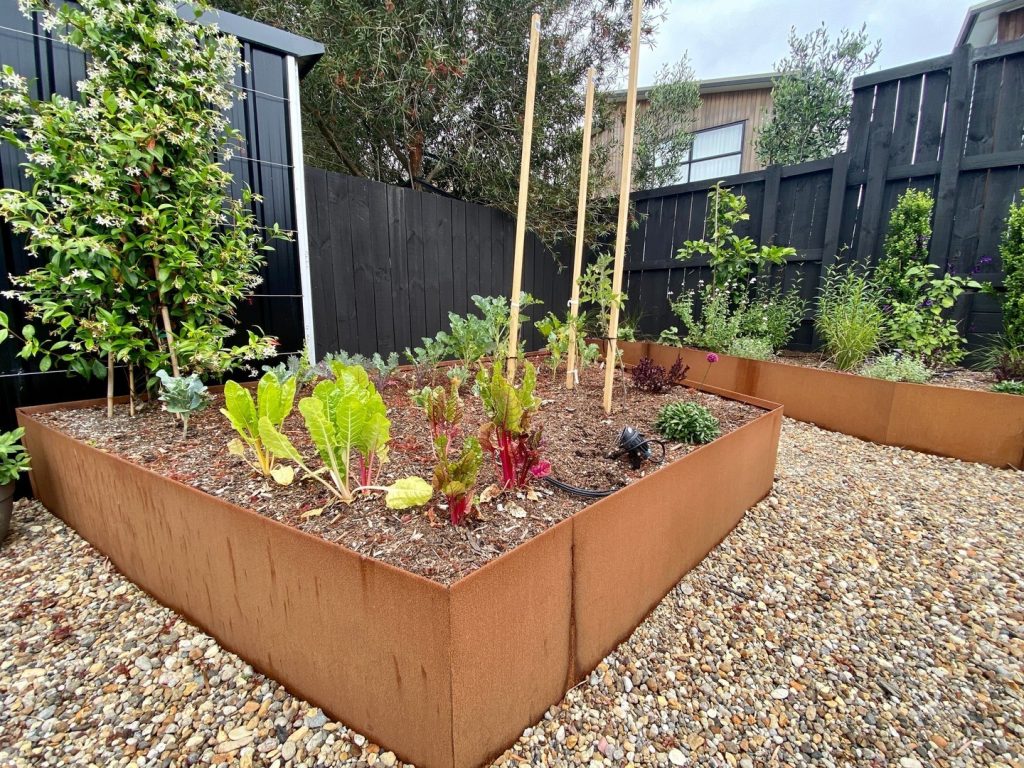
If you’re looking for a garden layout that stands out and adds a touch of creativity to your outdoor space, consider a circular raised bed design. This layout features beds arranged in a circular shape, creating a focal point in the center of your garden.
Circular beds not only look beautiful but are also incredibly functional. They allow for easy access to every part of the bed from the center, eliminating the need to walk on the soil and ensuring your plants stay undisturbed. This layout is perfect for smaller gardens or as a centerpiece in larger spaces. You can place a circular bed in the middle of your yard or near a patio area for an eyecatching garden feature.
The round shape of the beds also encourages better air circulation, preventing overcrowding and promoting healthy plant growth. Whether you’re growing flowers, herbs, or vegetables, a circular raised bed layout is both aesthetically pleasing and highly practical.
4. Tiered Raised Beds for MultiLevel Gardening

For gardeners with sloped or uneven terrain, tiered raised beds are an excellent option. This layout involves stacking raised beds in different levels, creating a cascading effect that not only looks stunning but also maximizes space in your garden.
The tiered design allows you to grow plants at various heights, which can improve sunlight exposure and drainage for each bed. It also adds a beautiful, multidimensional element to your garden, creating a visually appealing landscape that flows from one level to the next. Tiered beds are particularly wellsuited for larger gardens, where you can build multiple levels to create a sense of depth and dimension.
Each tier in the raised bed layout is designed to be easily accessible, so you can maintain and harvest plants without bending over or straining your back. This layout also offers flexibility, allowing you to grow different types of plants on each level based on their sunlight and water needs.
5. Square Foot Gardening Layout for HighYield Gardening

If you’re limited on space or want to maximize your garden’s productivity, the square foot gardening layout is an excellent choice. This method involves dividing each raised bed into squarefoot sections, where you can plant a specific number of crops in each section based on their size and growth habits.
The square foot gardening method is perfect for those who want to grow a high yield in a small area. By organizing your plants in such a systematic way, you can optimize space and ensure that each plant gets enough room to thrive. This layout is especially useful for beginners, as it simplifies planting and ensures that plants are spaced properly to avoid overcrowding.
Square foot gardening also promotes efficient watering and better soil health. By planting in separate sections, you can easily rotate crops each year, improving soil fertility and preventing disease buildup.
6. UShaped Beds for Easy Accessibility
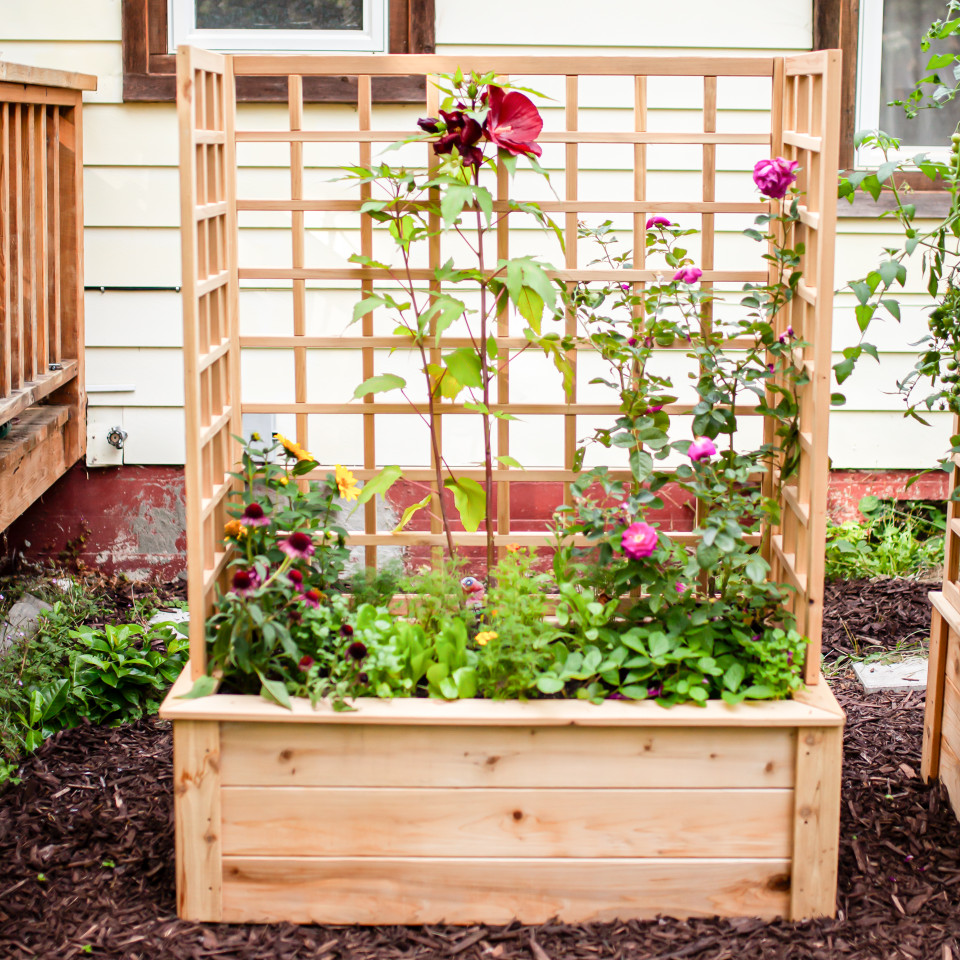
For gardeners who prioritize accessibility and convenience, the Ushaped layout is a gamechanger. This design places three raised beds in a Ushape, with a central path that allows you to access each bed from all sides without stepping on the soil.
This layout is ideal for people with mobility issues, as it provides easy access to every plant without the need to bend over or walk long distances. It’s also great for gardeners who want to keep everything within reach and avoid the hassle of moving around multiple beds.
The Ushaped design creates a cozy, enclosed space where you can easily organize your plants by type or care needs. It’s also a great option for those who want to create a visually appealing garden that flows seamlessly from one bed to the next.
7. Diagonal Layout for a Creative Twist

If you’re looking to add a bit of creativity and flair to your raised garden beds, a diagonal layout is a great option. By arranging your beds at an angle instead of in straight lines, you create a dynamic and visually striking design that adds movement and interest to your garden.
This layout is perfect for those who want to break away from traditional garden designs and create something unique. The diagonal arrangement can also help maximize space, especially in oddly shaped yards or areas with uneven terrain. Additionally, a diagonal layout can create the illusion of more space, making it ideal for smaller gardens.
The angled design also allows for better airflow between beds, preventing overcrowding and improving plant health. Plus, it adds a touch of modern sophistication to your outdoor space.
8. Raised Bed Pathways for Easy Navigation

Incorporating pathways between your raised garden beds not only adds functionality but also enhances the aesthetic appeal of your garden. This layout features beds arranged with clear walking paths between them, ensuring that you can easily navigate your garden without stepping on the soil.
Pathways are especially useful for larger gardens, as they create designated walking areas that prevent soil compaction and make it easier to maintain and harvest plants. You can use a variety of materials for the pathways, such as gravel, mulch, or stepping stones, to complement the look of your raised beds.
This layout also allows you to create distinct zones within your garden, organizing plants by type, size, or growth habit. The clear separation between beds makes it easier to access your plants and helps keep everything neat and tidy.
9. Garden Bed Islands for a Focused Garden Centerpiece
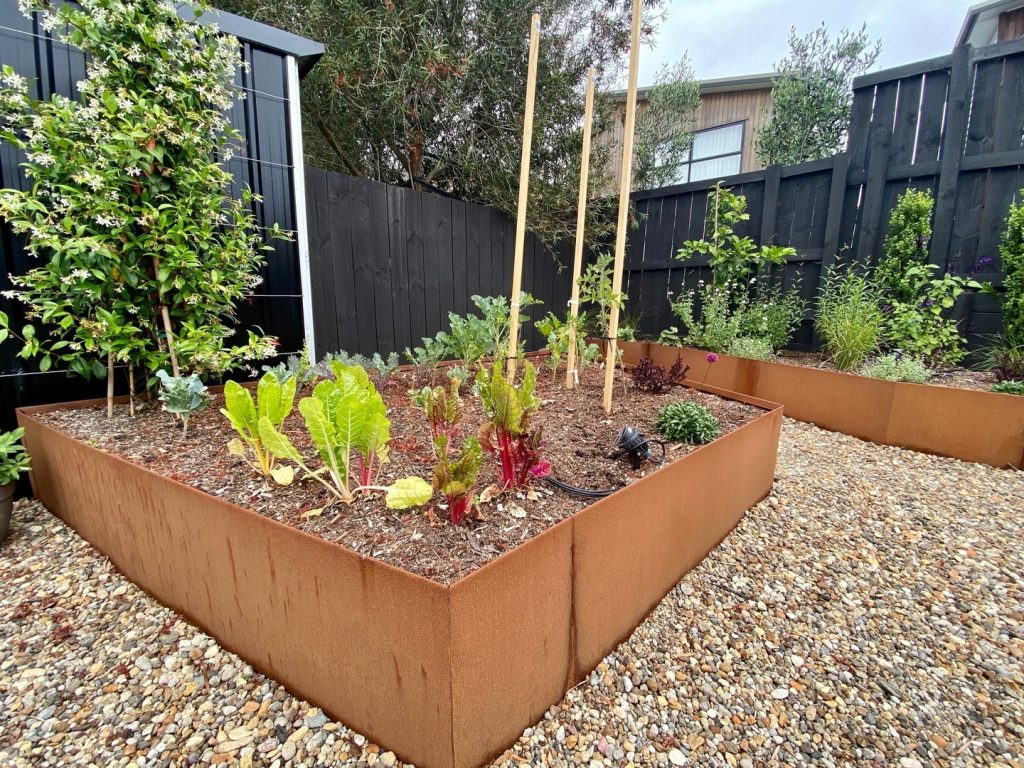
For gardeners looking to make a bold statement, consider creating garden bed islands in the center of your outdoor space. This layout features raised beds arranged in clusters, creating a central garden area surrounded by walking paths or open space.
Garden bed islands are a great way to showcase your favorite plants, whether they’re colorful flowers, aromatic herbs, or delicious vegetables. The circular or clustered arrangement draws attention to the center of your garden, making it the focal point of your backyard.
This design is particularly effective for larger gardens, where you have the space to create multiple islands or to experiment with different plant arrangements. Garden bed islands offer both aesthetic appeal and practicality, giving you a unique way to showcase your gardening creativity.
10. Symmetrical Layout for Balanced Design

Symmetry is a powerful design principle that creates a sense of order and balance in your garden. By arranging your raised beds in a symmetrical pattern, you can achieve a visually pleasing, harmonious layout that feels both organized and inviting.
Symmetrical raised bed layouts are perfect for gardeners who love structure and uniformity. This design works well in larger gardens, where you have the space to create perfectly mirrored designs. You can arrange the beds in rows, grids, or circular formations, ensuring that each bed is balanced on both sides of the central axis.
In addition to their visual appeal, symmetrical layouts also allow for efficient planting and maintenance. The uniformity of the beds makes it easier to plan crop rotation and manage your garden’s growth.
11. Herringbone Layout for Elegant Visuals

If you want to add a touch of elegance to your garden, the herringbone layout is a fantastic option. This design arranges your raised beds in a zigzag or diagonal pattern, creating a striking visual effect that adds movement and interest to your outdoor space.
The herringbone layout works particularly well in large, open gardens where you want to create a sophisticated, polished look. It’s perfect for gardeners who appreciate unique, modern designs and are willing to experiment with different patterns.
Not only does this layout look beautiful, but it also provides ample space for your plants to thrive. The angled design allows for better sunlight exposure and airflow, promoting healthy plant growth.
12. Circular Beds for a Cozy and Intimate Garden
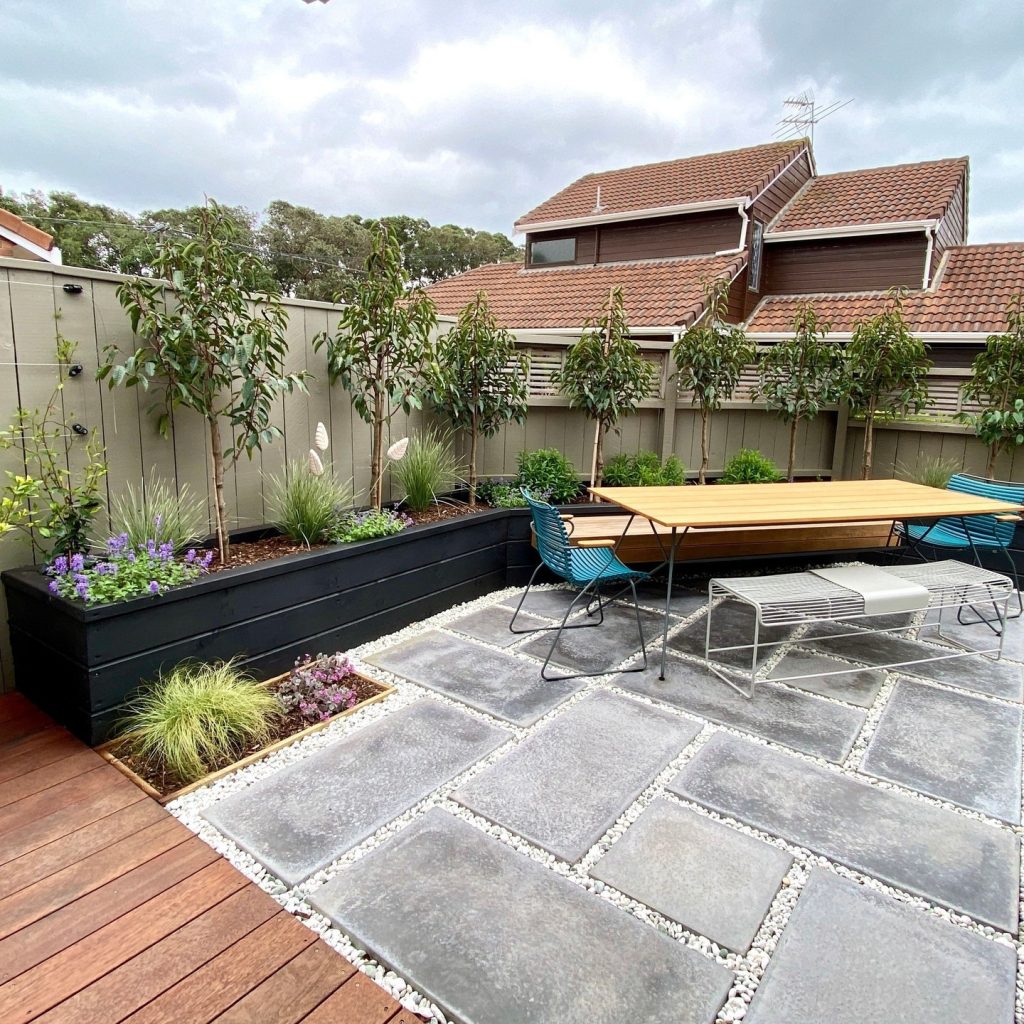
For a more intimate garden feel, circular raised beds can create a cozy, enclosed space perfect for smaller areas or as a charming garden feature. The round shape of the beds invites you to create a peaceful, secluded space where you can relax and enjoy your garden.
This layout works well in compact gardens or as a focal point in larger outdoor spaces. You can surround a circular bed with decorative elements like rocks, benches, or a garden path to enhance its charm.
Circular raised beds are also practical, offering easy access to your plants from all sides. The round shape encourages airflow and ensures that each plant gets equal exposure to sunlight, leading to healthier growth.
13. The Zigzag Layout for a Fun, Playful Twist
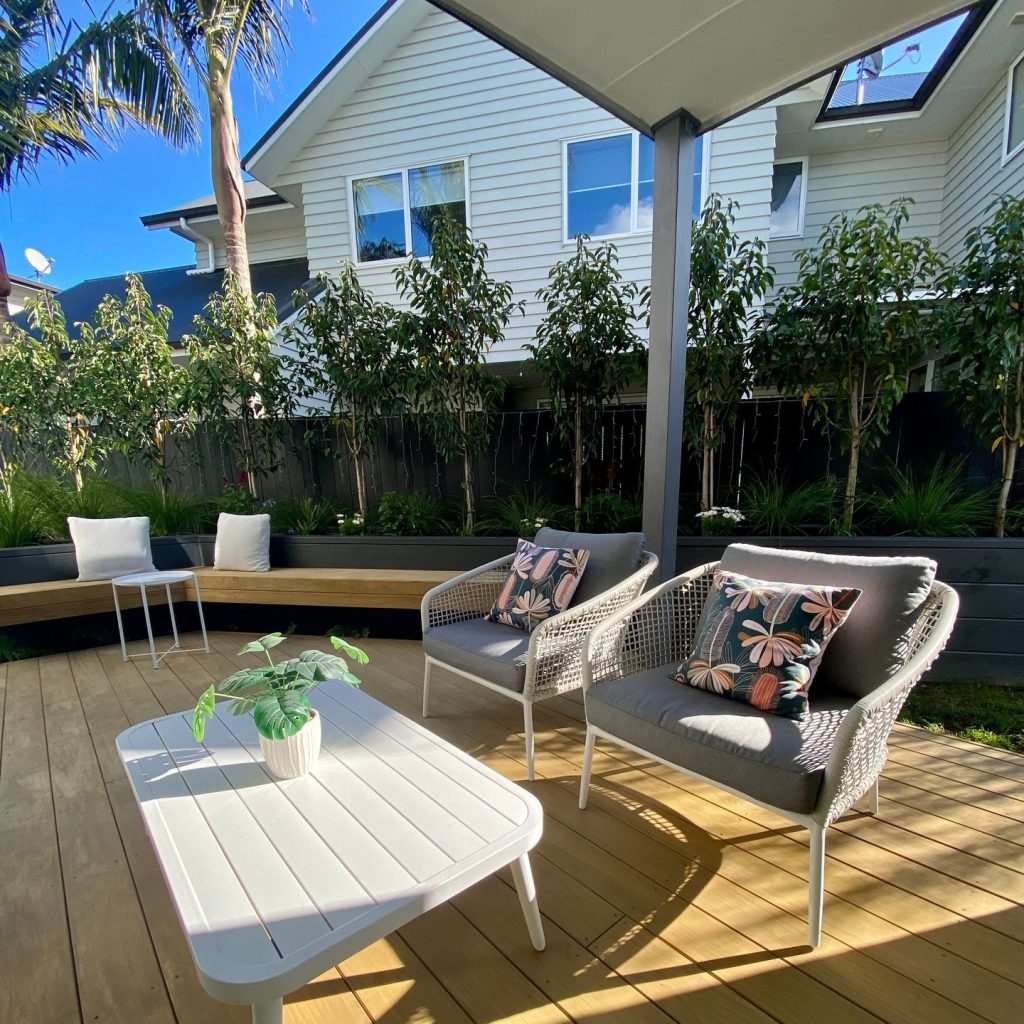
If you’re looking to inject some fun and creativity into your garden, the zigzag layout might be exactly what you need. This design arranges the raised beds in a backandforth, zigzag pattern, creating a visually dynamic and playful garden. The angular layout adds a touch of modernity while still maintaining functionality.
This layout is perfect for medium to large gardens, where you can play with the angles to make the most of your space. By arranging the beds in a zigzag formation, you create distinct sections within your garden, each with its own growing space. It’s an excellent way to divide your garden into different plant zones, allowing for easy crop rotation and better management of sunlight exposure.
The zigzag layout works especially well for vegetable gardens, as the angle of the beds makes it easier to organize your crops based on their sunlight and water needs. It also creates an engaging visual experience, offering a design that feels both structured and fluid.
14. Mixed Height Layout for Vertical and Horizontal Gardening

For gardeners who want to maximize both vertical and horizontal growing space, a mixedheight layout is an excellent option. This design incorporates raised beds of various heights, allowing you to grow different plants at different levels while making the most of your garden’s vertical space.
The mixedheight layout is perfect for growing vining plants, such as tomatoes and cucumbers, alongside leafy greens and herbs. The taller beds are perfect for plants that need more space, while the shorter ones are ideal for herbs, small flowers, or compact vegetables.
This layout offers a dynamic look and is especially useful for those with limited space. The variation in height adds visual interest, turning your garden into a multilayered masterpiece that looks beautiful and performs well. It’s a great solution for small yards or urban spaces where vertical gardening is key to maximizing your garden’s potential.
15. The “All Around” Layout for 360Degree Access
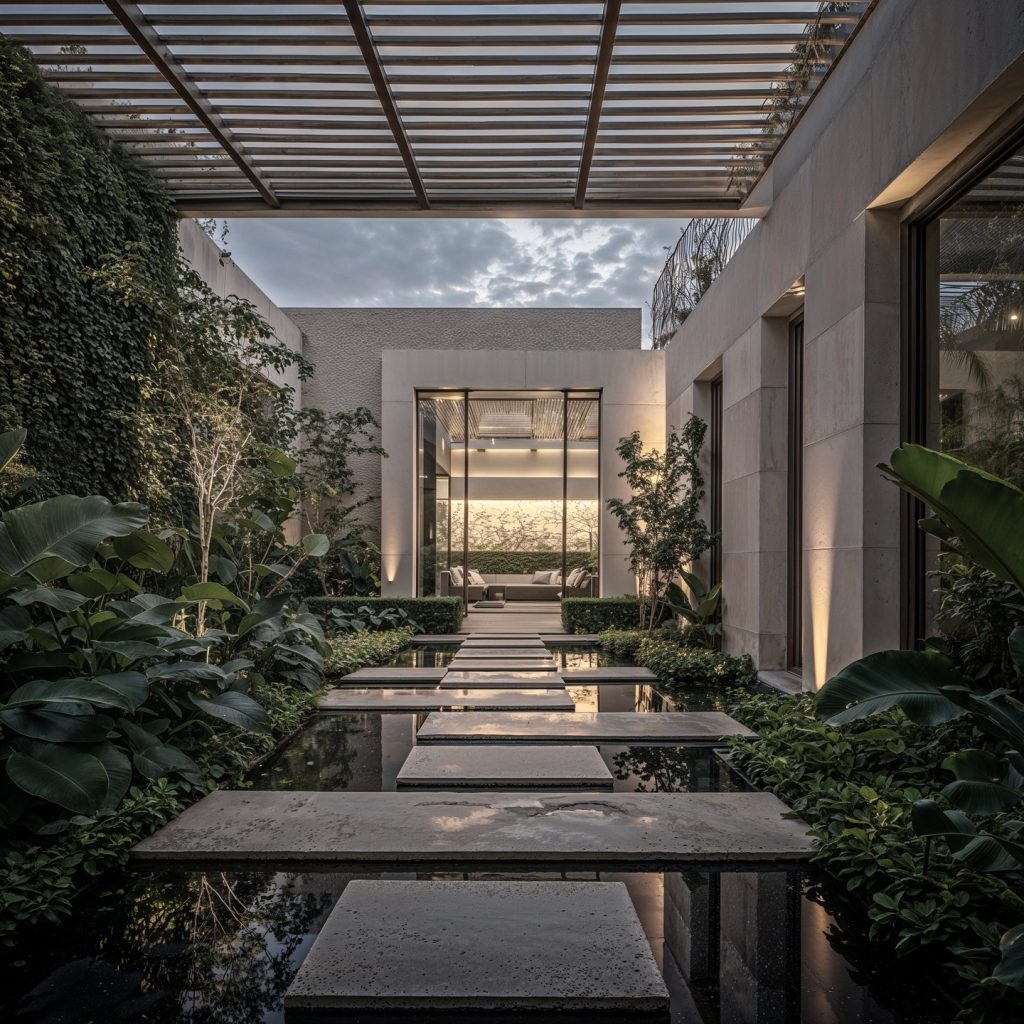
For gardeners who want the ultimate accessibility, consider an “allaround” raised bed layout. This design places raised beds in a circular or oval shape with a path that surrounds the garden, allowing you to access each bed from every direction. It’s the perfect layout for small or mediumsized gardens where you want to minimize walking and maximize planting space.
The “allaround” layout is particularly useful for gardeners with mobility concerns, as it eliminates the need to bend or reach over beds. It’s also a great option for gardeners who love multitasking—such as weeding, harvesting, or watering—while having everything within arm’s reach.
This design is also aesthetically pleasing, as the circular layout provides balance and symmetry to your garden. You can plant a variety of crops in the beds, and the circular design ensures that every plant has equal exposure to sunlight.
16. Raised Bed Walls for Garden Division
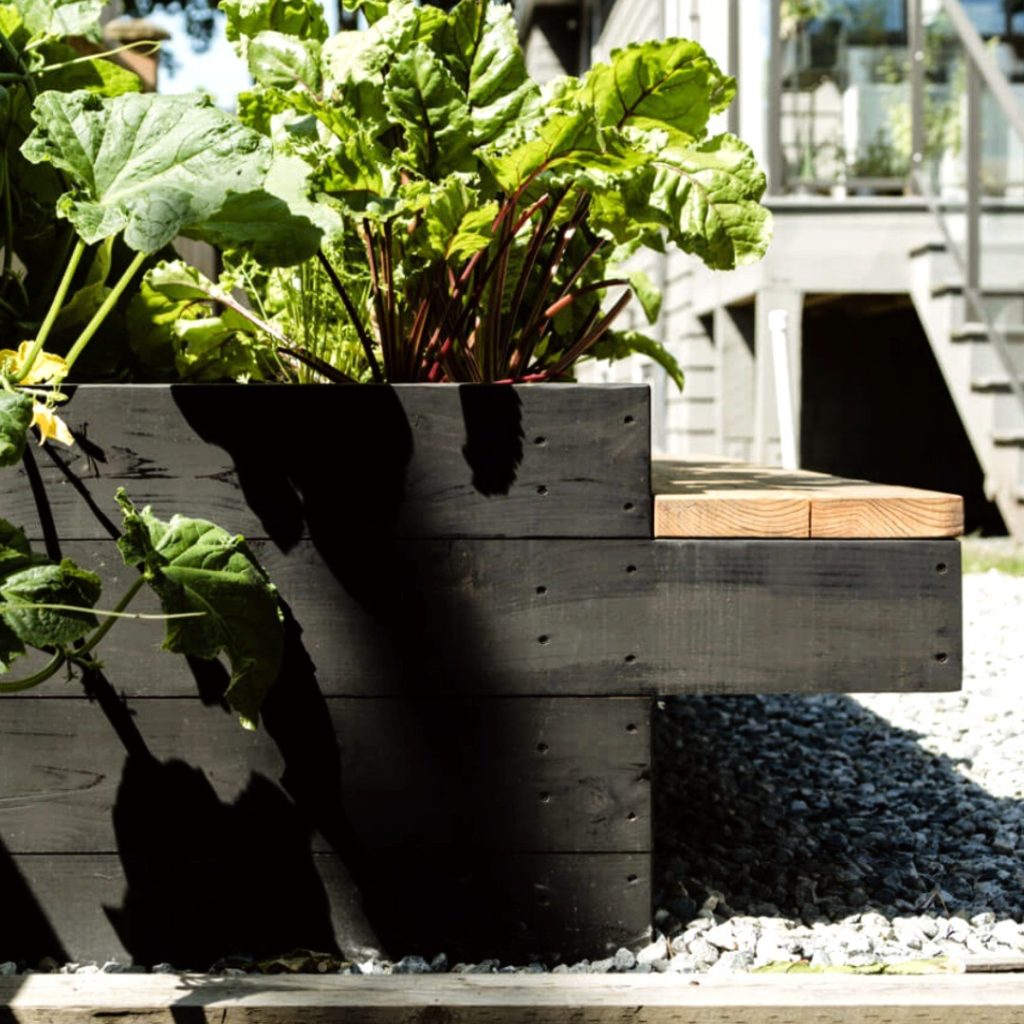
For those looking to create a more organized and defined garden space, raised bed walls offer a great solution. These walls can be constructed using materials like wood, stone, or brick, and can be stacked to create a multilayered design that divides your garden into distinct zones.
Raised bed walls are perfect for gardeners who want to separate different types of plants or create a visually appealing landscape with varying levels. You can use these walls to create pathways, elevated planting areas, and even seating spaces, allowing you to enjoy your garden from multiple angles.
The walls also help contain the soil, which prevents erosion and helps maintain consistent moisture levels for your plants. It’s an elegant solution for gardeners who want to add a structured, sophisticated element to their garden while maintaining practicality and function.
17. Vertical Planters Within Raised Beds

For gardeners who are looking to save space while still growing a variety of plants, integrating vertical planters within your raised garden beds is an effective approach. These planters can be placed along the sides of the raised beds, allowing you to grow vining plants like peas, tomatoes, or flowers on vertical trellises, while using the bed’s remaining space for other crops.
This layout maximizes both the vertical and horizontal dimensions of your garden, providing you with more growing space without taking up additional ground area. The vertical planters also help to reduce the spread of disease by providing better airflow between plants.
Incorporating vertical planters within raised beds also adds a unique, visually dynamic element to your garden, creating layers of plants and flowers that stretch upward. It’s a fantastic solution for small gardens or urban spaces, where every inch of space counts.
18. SingleRow Beds for a Linear Design
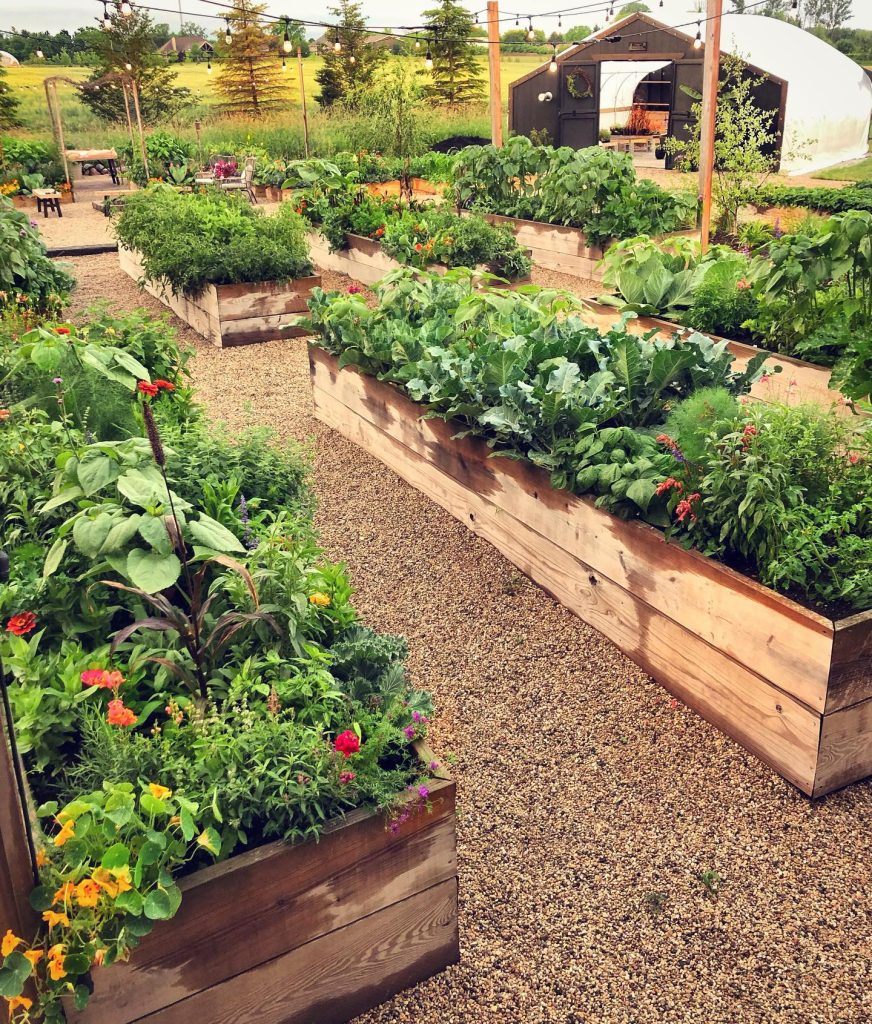
If you prefer a more minimalist design, singlerow raised beds are a great option. This layout arranges your raised beds in long, straight lines, creating a clean, linear pattern that’s easy to maintain and visually organized.
Singlerow beds are ideal for gardeners with a simple and straightforward aesthetic in mind. This layout maximizes space while keeping everything neat and tidy, making it easier to tend to your plants without feeling overwhelmed. It’s especially useful for vegetable gardens, as you can plant crops in wellorganized rows that allow for easy access and efficient use of space.
While the design is basic, singlerow beds offer plenty of room for growing a wide variety of plants, from vegetables to herbs and flowers. It’s an excellent layout for beginner gardeners or anyone who appreciates simplicity and organization.
19. Cabbage Patch Layout for Organized Clusters
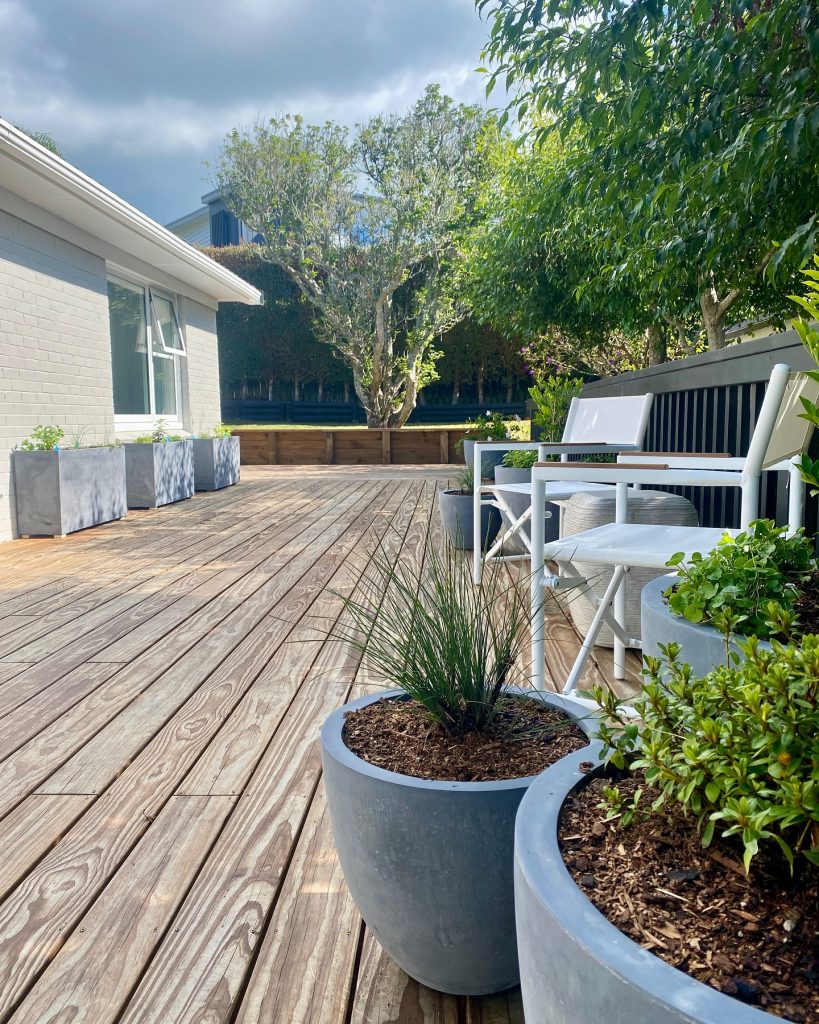
For gardeners who want to create a more organic, clusterbased design, the cabbage patch layout is an ideal choice. In this layout, raised beds are grouped together in tight clusters, resembling the natural growth patterns of a cabbage patch. The beds are arranged in an asymmetrical fashion, creating a more natural, informal look that still maintains clear organization.
This layout is perfect for growing plants that thrive in close proximity, such as leafy greens, herbs, or flowers. The grouping of beds allows for a diverse mix of plants while encouraging companion planting and crop rotation.
The cabbage patch layout also promotes efficient use of space, as the beds are arranged in a way that minimizes gaps between them. It’s an ideal design for gardeners who prefer a less structured, more relaxed aesthetic.
20. Linear and Curved Beds for Soft Edges
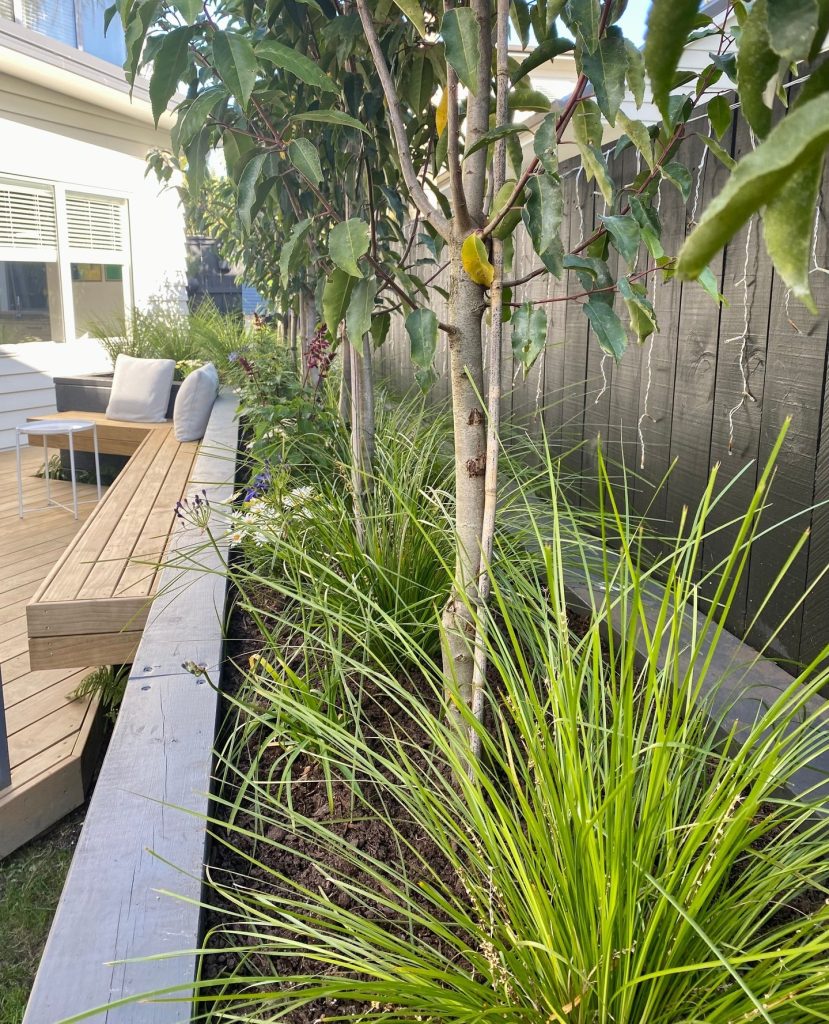
If you prefer a garden layout with a more natural, flowing feel, combining linear and curved raised beds is a beautiful option. This layout combines the straight lines of linear beds with the gentle curves of rounded beds, creating a harmonious blend of geometric and organic shapes.
The curved beds add softness to the design, creating a gentle flow that complements the straight edges of the linear beds. This layout works well in medium to large gardens, where you can create both structure and fluidity with your planting zones.
It’s a versatile design that works with a variety of garden types, from vegetable gardens to ornamental flower beds. The curved edges also encourage better soil retention, preventing water runoff and helping plants maintain consistent moisture levels.
21. Nested Raised Beds for Efficient Planting
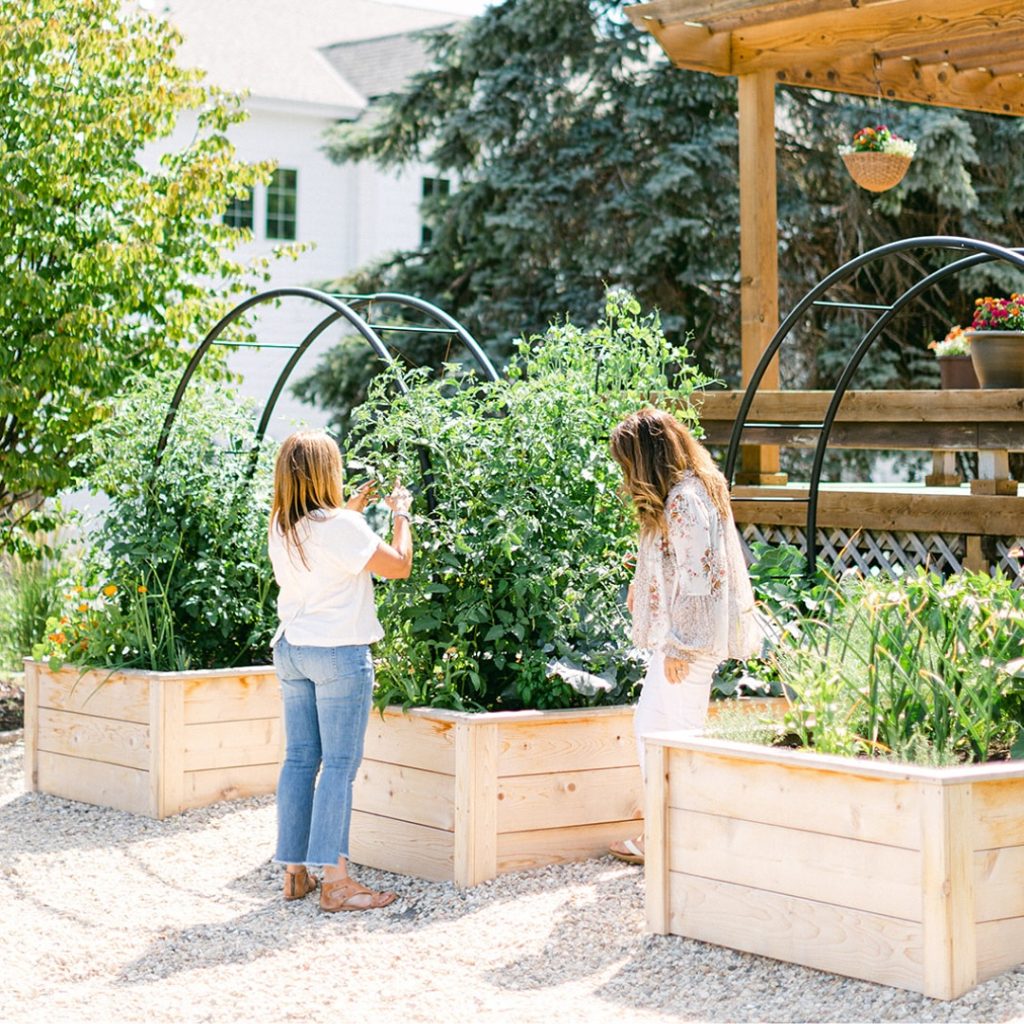
For gardeners who love efficiency, nested raised beds are a smart solution. In this layout, smaller raised beds are placed inside larger ones, creating a nesting effect that maximizes available space while offering a visually striking design. The beds are organized to fit snugly within each other, creating layers that make it easier to manage your garden.
Nested raised beds are perfect for those with limited space, as they allow you to grow multiple crops in a confined area. The design encourages efficient use of space, as each bed can be planted with crops that have similar growing requirements.
This layout also promotes good soil health, as the beds are designed to ensure proper drainage and prevent waterlogging. It’s a great option for urban gardeners or those with smaller yards who want to maximize every inch of available space.
22. Double Raised Beds for Double the Plants
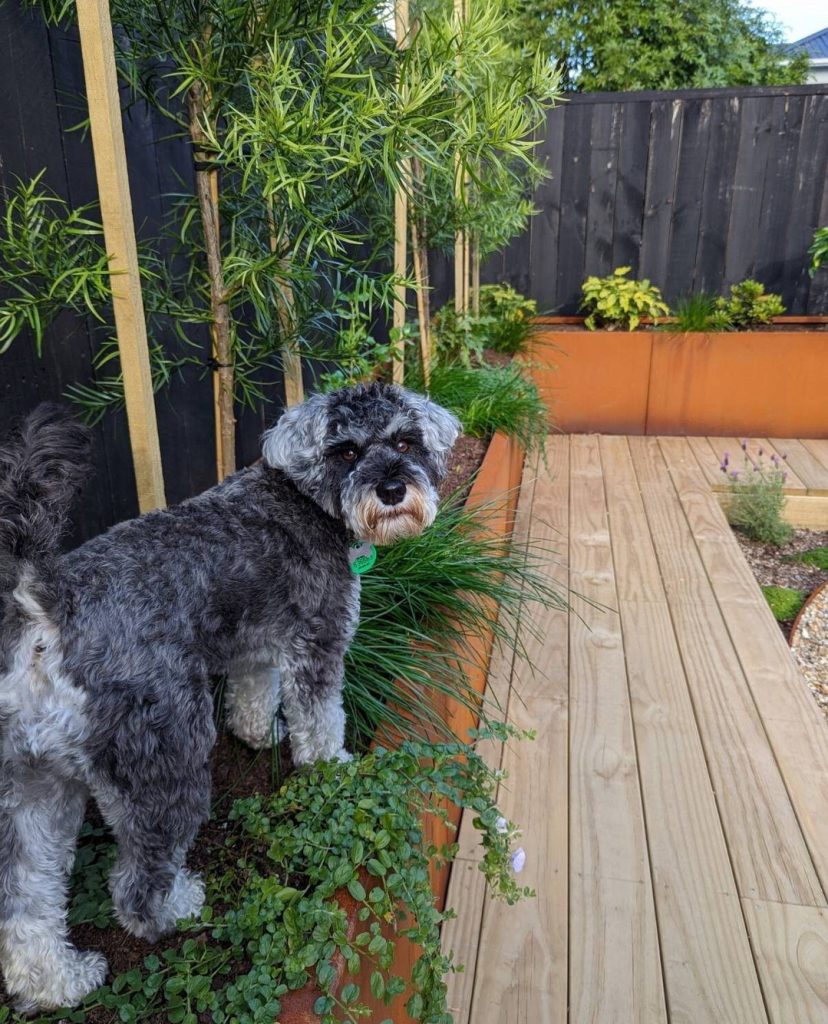
If you’re looking to maximize your garden’s productivity, double raised beds are the way to go. This layout involves pairing two raised beds together, either sidebyside or stacked, to create twice the space for planting.
Double beds are ideal for gardeners who want to increase their yield without sacrificing space. You can grow a variety of crops, from vegetables to herbs and flowers, and the extra space allows for better crop rotation and planning. This design is also beneficial for gardeners who grow taller plants, as the extra room ensures that each plant has enough space to thrive.
This layout is particularly useful for gardeners with mediumsized yards who want to grow more plants without overcrowding.
23. Geometric Layout for Precision and Style
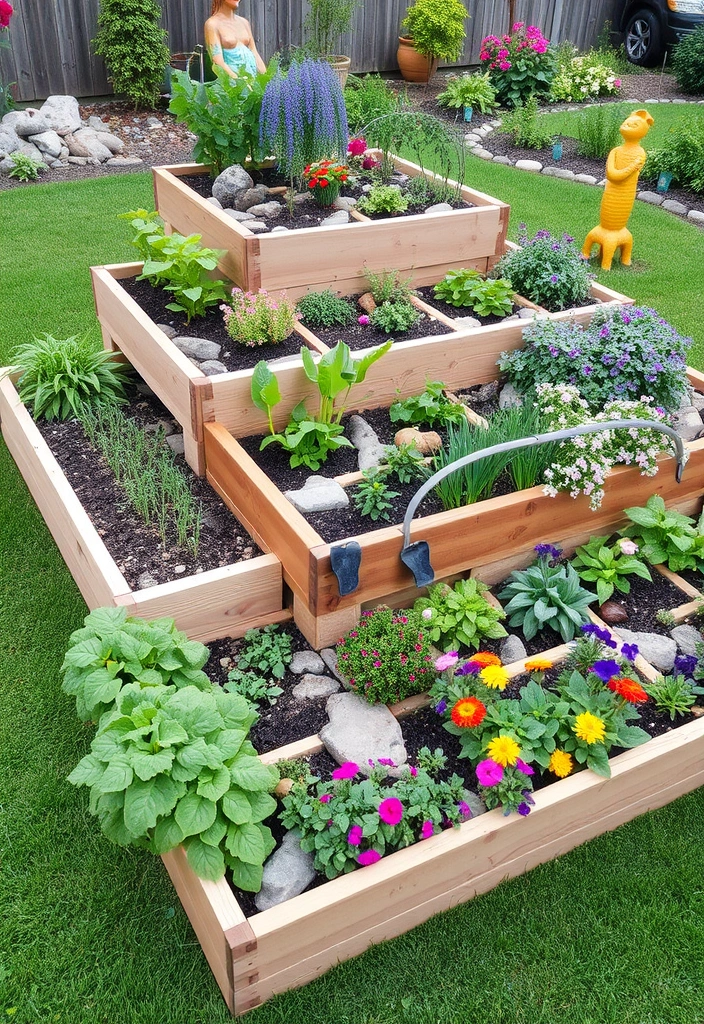
For gardeners who appreciate precision and geometry, a geometric raised bed layout is a stunning choice. This design incorporates various geometric shapes such as hexagons, triangles, and octagons, creating a visually interesting pattern that stands out in any outdoor space.
The geometric design allows you to create a precise, symmetrical garden that adds structure and elegance. It’s perfect for those who love order and symmetry in their garden, while still having plenty of room for creativity and experimentation with different plant arrangements.
The unique shapes also encourage you to think outside the box, allowing you to experiment with different planting styles and maximize the space in your garden.
Conclusion
Raised garden beds offer endless opportunities to experiment with layout designs, allowing you to create a garden that’s not only functional but also visually stunning. Whether you prefer clean lines, organic shapes, or intricate geometric patterns, there’s a layout that can suit your space and gardening goals.
From the traditional rectangular layout to more creative ideas like tiered beds or zigzag patterns, these 23 raised garden bed designs are sure to inspire you to transform your outdoor space into a beautiful, productive garden.
No matter the size of your yard, there’s a layout that fits your needs, offering an efficient and beautiful way to grow your plants. Take your time to plan, experiment with different designs, and, most importantly, have fun creating the garden of your dreams!



